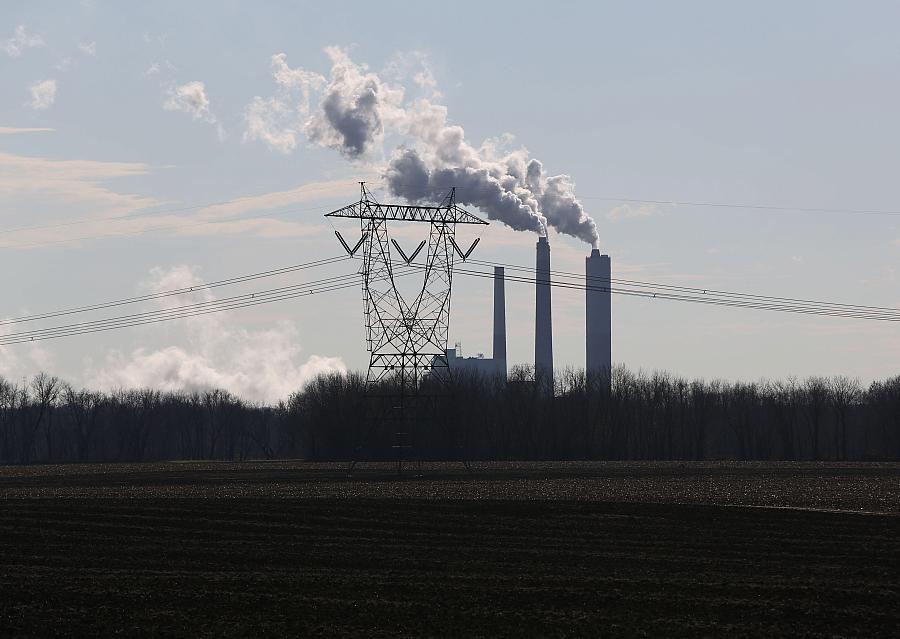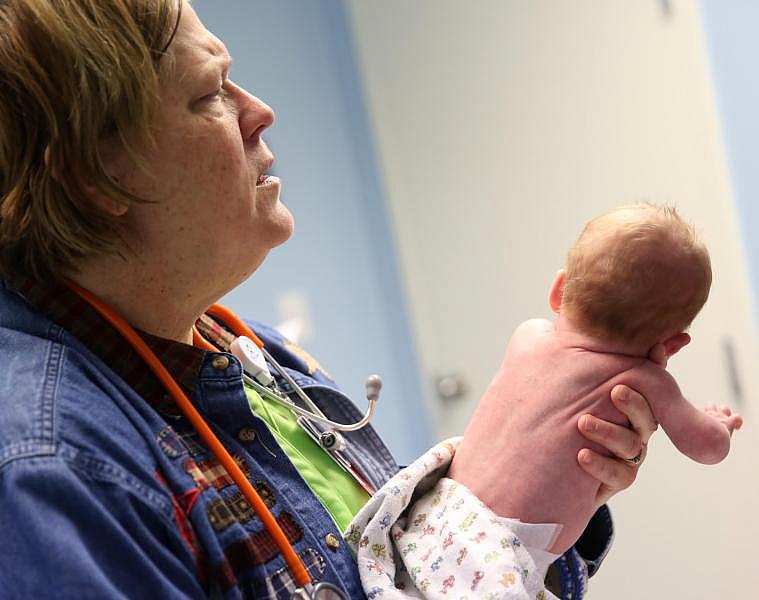Reporter questions assumptions to reveal hidden link between Indiana pollution and infant mortality

A view of the Petersburg power plant located just miles from Washington, Indiana, which is located in the Indiana county with the highest infant death rate from 2010-2014. (Photo: Damian Rico/The Times of Northwest Indiana)
While reporting for my series about infant mortality in Indiana, I relearned an important journalistic lesson: Get rid of any preconceived notions you may have.
In the nearly two years leading up to my Center for Health Journalism National Fellowship, I had written some about Indiana's high infant death rate and the state's efforts to combat it. Over and over, I heard the same things: Indiana women smoked during pregnancy more than women in other states; they weren't going to the recommended number of prenatal visits; they didn't breastfeed enough. In other words, the mothers' behavior caused their babies to die.
During fellowship week at the USC Center for Health Journalism, we visited Los Angeles neighborhoods contaminated by lead. Afterward, my senior fellow, Kate Long, suggested I look into the link between pollution and dead babies.
I had never heard Indiana public health officials mention pollution as a cause of infant death. And even if there was a connection, how would I prove it?
I talked to one of the fellowship’s speakers, Dr. Bruce Lanphear, an expert on environmental health. He provided me with the names of other sources on the link between health and the environment, and promised to send me research into pollution and infant mortality.
In the following weeks, he emailed me numerous studies. The science was unequivocal: Pollution — whether in the air, water or soil — is a risk factor for premature birth and low-birth weights, two of the leading causes of infant death.
But why weren't Indiana officials talking about this? And was anyone studying whether pollution was killing babies here?
I planned to focus my series on the Indiana ZIP codes with the highest infant mortality rates. But the state of Indiana only identifies localities with five or more infant deaths in a given year. So its ZIP code-level data leaves out less populous cities.
Since infant mortality isn't strictly an urban issue, I wanted to profile at least one rural community in my series. I researched the counties with the highest infant mortality rates from 2010 to 2014 and was surprised to learn that Daviess County, which is located in southwest Indiana and has a population just north of 32,000, ranked No. 1.
In an interview, one of my sources mentioned that an Indiana pediatrician once tweeted about how the state didn't have enough pollution monitors. My source couldn't remember the woman's name.
I searched on Twitter. It took a while, but I found the tweet in question: "Indiana environmental agency not monitoring pollution in 2/3 of Indiana counties. Can't evaluate what's not measured." I saw another intriguing tweet from the same doctor: "Need to consider Indiana pollution ranking as contributor to infant mortality."
I Googled the pediatrician, Dr. Norma Kreilein. It turned out she practiced in Washington, Indiana, the county seat of Daviess County. Now I was really intrigued.
I called Kreilein. We talked on the phone for two hours.
She said Indiana public health officials didn't acknowledge the link between pollution and infant mortality because their boss at the time, then-Gov. Mike Pence, was a known supporter of the coal industry and an opponent of federal environmental protections.
She said she'd encouraged the Indiana State Department of Health and Indiana Department of Environmental Management to do more to protect infants from the effects of pollution but had been rebuffed at every turn.
She said she'd been interviewed by Jamie Smith Hopkins, another 2016 Center for Health Journalism National Fellow. Smith Hopkins' fellowship project was about “America’s super polluters," power plants that rank in the top 100 in the nation for both toxic-air and greenhouse-gas emissions. Southwest Indiana is home to four of the 22 "super polluters," more than anywhere else in the country.
Washington, Indiana, is downwind from those four facilities.
I visited the small town late last year. One of the "super polluters," a coal-fired plant in nearby Petersburg, was visible from the highway as I turned into Washington. The smokestacks, which could pass as skyscrapers amid the flat agricultural terrain, pumped out thick clouds of exhaust that reached to the heavens.
Dr. Norma Kreilein gives Matthew Riggle, who was born premature, a checkup in November in Washington, Indiana. (Photo: Damian Rico/The Times of Northwest Indiana)
I stopped by Dr. Kreilein's office, where she was caring for a set of preemie twins. Their mother had gone into labor not long after authorities issued an air quality warning in southwest Indiana. One of the twins spent 19 days in a neonatal intensive care unit with heart and lung issues.
"This is still an unbelievably vulnerable baby," Kreilein said as she examined the 8-week-old infant. "This child is still on very thin ice in terms of how sick he can get if he just gets a cold. So when you cook him in air (pollution) and his nose plugs up and his ears plug up because they're tiny or you clog those airways up even more ...”
She said there was really no other explanation, besides pollution, for her county having the highest infant mortality rate in the state. She was upset the health department wouldn't acknowledge the link, and that Indiana's environmental protection agency wasn't monitoring pollution in Daviess County.
My story about Daviess County ended up being one of the most compelling in my six-part series. Several politicians, physicians and academics thanked me for either introducing them to the tie between pollution and infant deaths or for shedding light on a topic they were all too aware of. Kreilein said state officials had indicated they would finally give her an audience. None of this would have happened had I only focused on what I thought I knew about why babies died.
This should go for any journalistic endeavor, but if you're diving into a subject as complex as infant mortality, you can't go into it with assumptions of any kind. Otherwise, you might miss out on the real story.
**
Read the stories in Giles Bruce’s fellowship series here.

